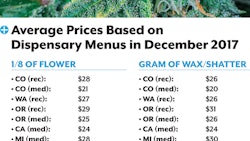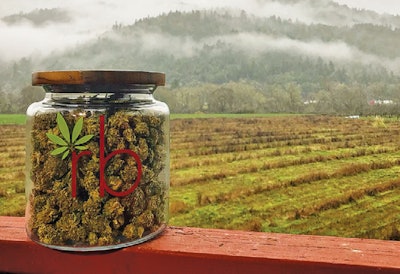
Moratorium is a scary word for cannabis business owners. When a city or county enforces a ban on cannabis cultivation or sales (or both), it can swiftly put an end to existing businesses and halt industry expansion, even in state-legal markets. But what if a business owner could work around a moratorium to achieve his goals? Todd Theiss, the co-owner of Redbarn Dispensary in Douglas County, Ore., ventured to find out.
As a veteran of the real estate industry with an established presence in the county, Theiss was looking in 2014 to diversify his business portfolio. He owned a quarter-acre property at the edge of Tri-City’s border on Old North Pacific Highway, just off Interstate 5. (Theiss’ wife, Serena, operates a farmers market vegetable stand there.) Logistically, it was perfect for a retail storefront thanks to its easy access from the freeway and lots of room for potential expansion. It also met the Oregon Liquor Control Commission’s (OLCC) requirements for a cannabis business. But Tri-City’s temporary ban on dispensaries presented a major roadblock.
However, Myrtle Creek, the neighboring city, had opted in to host cannabis businesses. Theiss, well-versed in zoning laws from his real estate background, knew just what to do. He petitioned Myrtle Creek to voluntarily annex his property from Tri-City in late 2014. Theiss’ plan was to rezone the property for commercial use to make it a viable fit for a medical and recreational dispensary with a Myrtle Creek address.
“It was difficult,” Theiss says. “We had to go through several public comment periods where all the neighbors got to weigh in if they chose to.” According to Theiss, community members came forward to express their support, but the project in Myrtle Creek’s small, agricultural and conservative town was still met with some opposition.
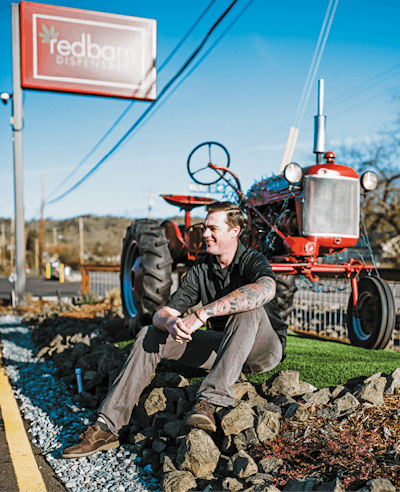
The public comment period ended 150 days later. Redbarn’s supporters triumphed, and the Myrtle Creek City Council approved the annexation. Theiss quickly took the proper steps to rezone the land for commercial use. Then he underwent conditional use permit (CUP) stipulations such as addressing noise, light pollution and hours of operation in his business plan.
Finally, on Aug. 31, 2017, after a complete renovation of the property, and with a full staff in place and shelves filled with about 100 SKUs for all types of cannabis consumers, Redbarn Dispensary opened its doors for business.
A Lesson from Trader Joe’s
Redbarn Dispensary—aptly named considering the mobile home-type structure is painted red, and a 5-foot-tall tractor sits at the front of the property—has a very clear mission: to offer a wide selection of products at fair pricing. Much of that philosophy comes from its dispensary manager, Martijn Wagner, whose previous employment in management at Trader Joe’s taught him that good business starts with treating the customer right.
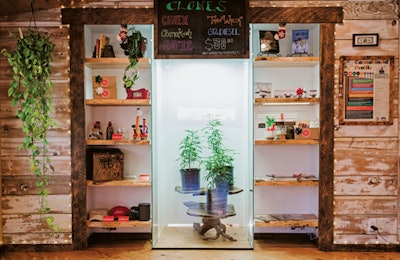
For example, when it comes to flower products, Wagner says, “When I get in product at a better price per pound, I’m not going to … keep my price per gram the same. I’m going to … make sure the customers see that savings. That’s one of the nicest things [about] working for Trader Joe’s as long as I did. They definitely instilled a good sense of integrity when it comes to the way we do our pricing here.”
The same goes for the Redbarn’s additional product offerings, including artisanal baked goods, vape cartridges, shatter, wax, rosin, tinctures and more, which have proven to be popular with the community, Wagner says, though flower seems to be the top seller. He reports sales are performing well within the first six months of operation.
In fact, traffic has picked up so much, he says, that, “We’re waiting on approval from the OLCC to have two more cases and another register installed, so we’ll have three registers at that point on the sales floor, and it will be another 8 feet of shelf space. So, we’re going to increase [the] … amount of the edibles we can carry and have a little bit more room for concentrates, as well.”
With shelf space being so valuable, Wagner notes that inventory is carefully curated. Being a craft cannabis grower himself, his industry connections have helped him partner with quality producers and avoid those who may not be operating to Redbarn’s standards. The layout of that shelf space is carefully considered, too. The display cases are set up like a horseshoe, so customers don’t have to wait in line to look at the same items. “Jane over here can be shopping, and she can be looking at Gorilla Glue #4 [editor’s note: now GG4], and Joe on the opposite side can be looking at … the exact same product. … We … try to make sure that we have the same experience for everybody, so it’s not cramped or uncomfortable,” Wagner says. “You definitely can make the buying decision at the pace and at the time that you want to do it.”
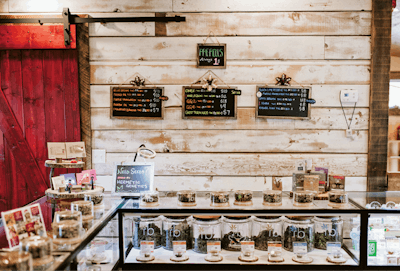
Creating a Comfortable Vibe
Wagner believes that the store’s vibe and atmosphere is what provides the ultimate consumer experience.
“I’ll be honest,” Wagner says. “Obviously, we have plenty of the younger crowd coming in here, but we don’t play trap music; we’re not looking to only have 21-year-olds in here. … That’s not our vibe. We … have a professional atmosphere. … So, we definitely want to make sure that the 65-year-old lady that lives down the road can feel comfortable coming here and talking to us about lotions for her arthritis or whatever it may be.”
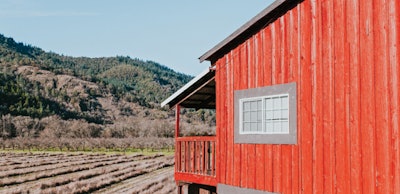
Much of that impression is supported by the store’s branded design, which Wagner and Theiss attribute to Steph Cence, Redbarn’s branding and marketing director, and Steve Cence, the company’s COO (and Steph’s husband). Steph’s vision was to bring in neutral and warm colors, and she’s also the one staging product shots on the property and monitoring the website and Instagram account. Steve, who is also a carpenter, builder and contractor, installed many of the store’s design features which he built from scratch, including the sliding barn door and the custom woodworking on the walls and shelves.
Between creating a comfortable atmosphere and a mission to treat customers right, Redbarn seems to have started on the right foot—if Myrtle Creek’s mayor being Redbarn’s first customer and the continued rise in sales numbers are any indication. (The dispensary sees about 75 to 120 customers per day.) In a city with only 3,500 residents, “If somebody was going to do it, the only way it was going to happen was [if it started from] somebody that [the community] trusted, and … that was going to represent Myrtle Creek in the fashion they felt was proper,” Wagner says. “[Theiss] definitely wants to make sure that people understand that we started in Myrtle Creek and that Myrtle Creek is our home, and we plan on representing Douglas County in a very, very good light.”










